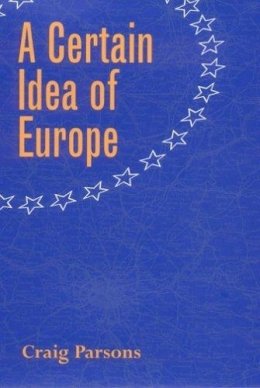
A Certain Idea of Europe
Craig Parsons
The quasi-federal European Union stands out as the major exception in the thinly institutionalized world of international politics. Something has led Europeans—and only Europeans—beyond the nation-state to a fundamentally new political architecture. Craig Parsons argues in A Certain Idea of Europe that this "something" was a particular set of ideas generated in Western Europe after the Second World War.
In Parsons's view, today's European Union reflects the ideological (and perhaps visionary) project of an elite minority. His book traces the progressive victory of this project in France, where the battle over European institutions erupted most divisively. Drawing on archival research and extensive interviews with French policymakers, the author carefully traces a fifty-year conflict between radically different European plans. Only through aggressive leadership did the advocates of a supranational "community" Europe succeed at building the EU and binding their opponents within it.
Parsons puts the causal impact of ideas, and their binding effects through institutions, at the center of his book. In so doing he presents a strong logic of "social construction"—a sharp departure from other accounts of EU history that downplay the role of ideas and ideology.
Product Details
About Craig Parsons
Reviews for A Certain Idea of Europe
Claire Herbert
Journal of European Affairs
Parsons provides a full and intricate history of French diplomacy on the question of European Community building. It stands in its own right as a new and scholarly contribution to French postwar history and politics up to the end of the 1970s.
International History Review
Parsons's book is a welcome addition to the study of the European Union.... Parsons provides a vivid discussion on the early dynamics of French efforts to influence the evolution of European institutions from their inception after World War Two.... The book is both substantively and theoretically rich, and provides a wealth of bibliographic resources, analytical footnotes, and a well-organized index.... Highly recommended. General readers and upper-division undergraduates and above.
Choice
